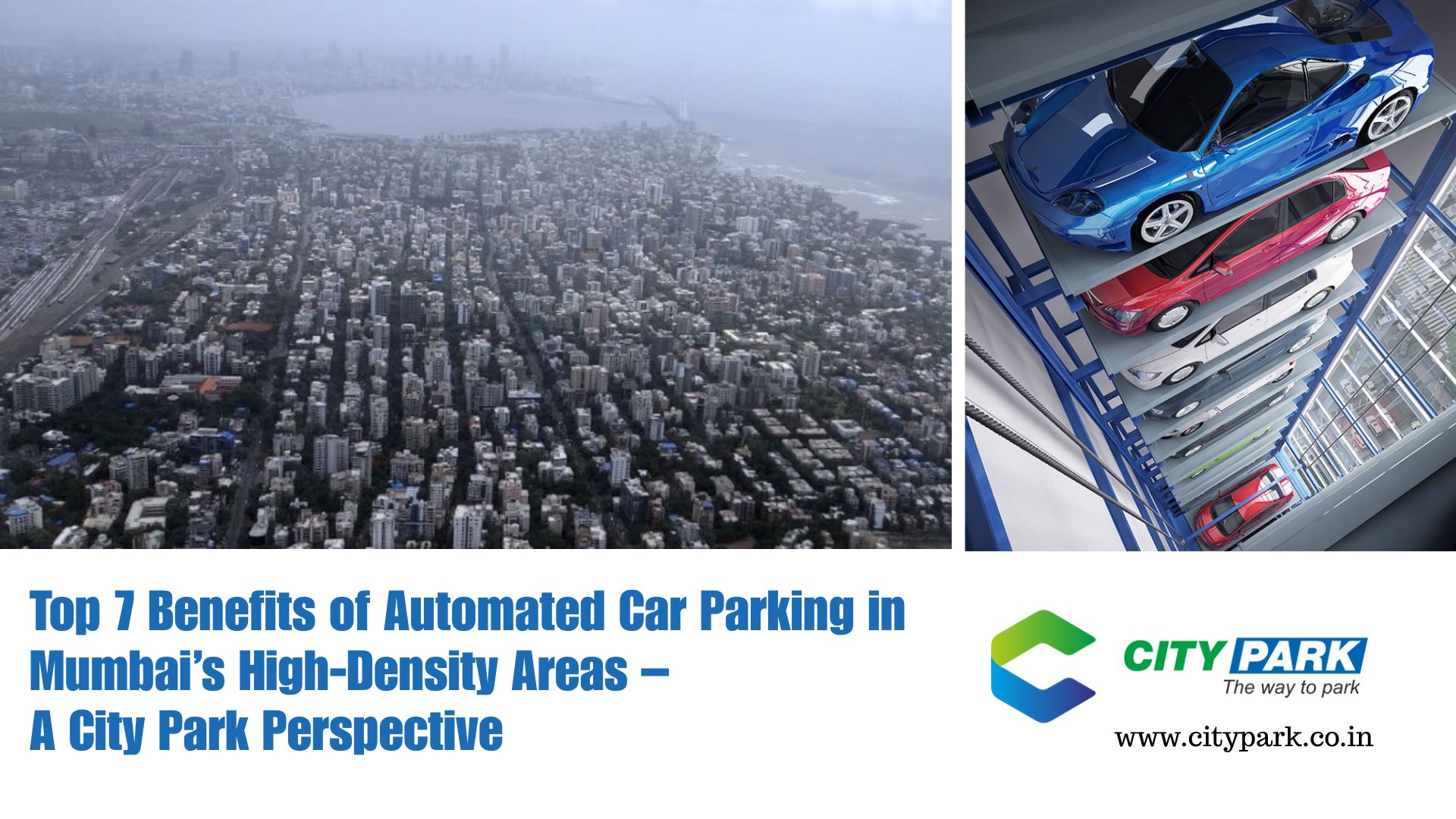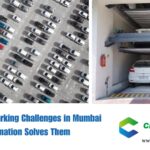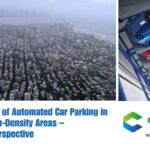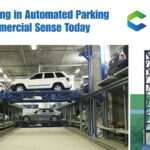The Biggest Parking Challenges in Mumbai and How Automation Solves Them
Mumbai — India’s financial capital, cultural powerhouse, and one of the world’s densest cities — carries an unmistakable charm. Yet beneath its vibrant energy lies a pressing urban reality: the struggle to find parking. Whether you’re navigating the narrow lanes of Dadar, circling around Andheri’s commercial districts, or searching for a spot near a railway station, parking in Mumbai often feels like a battle against time and space.
With rapid urbanisation, high-rise construction, and rising vehicle ownership, the gap between available parking spaces and demand keeps widening. Traditional parking systems have reached their limits. Automation has emerged as the most efficient and future-ready solution to this growing urban crisis.
In this extensive blog, we explore Mumbai’s biggest parking challenges and how Automated Parking Systems (APS) can solve these issues with advanced engineering, smarter land utilisation, and modern technology.
Why Parking Is a Critical Concern in Mumbai
Before diving into specific challenges, it’s important to understand the context:
- Mumbai has one of the highest vehicle densities in India.
- Roads take up only ~9% of the city’s land — among the lowest for any global metropolis.
- Real estate prices are some of the highest in the world.
- Population density exceeds 20,000+ people per sq km in many areas.
- Most older buildings were not designed to support today’s parking demand.
The result: daily traffic jams, overspill parking, congestion, and frustrated commuters.
Let’s break down Mumbai’s biggest parking challenges — and see how automation can transform the entire parking ecosystem.
- Extreme Space Shortage and High Land Costs
Perhaps the most fundamental challenge in Mumbai is the limited availability of land, coupled with sky-high property prices. In many urban zones, land rates reach:
- ₹25,000 to ₹80,000 per sq ft (South Mumbai)
- ₹15,000 to ₹40,000 per sq ft (Western Suburbs)
- ₹10,000 to ₹20,000 per sq ft (Central suburbs)
When land is so expensive, traditional parking simply doesn’t make economic sense.
Why Traditional Parking Fails
- Ramps take up nearly 25–30% of space.
- Driveways consume another 20–30%.
- Turning radii and circulation zones reduce net parking efficiency.
- A conventional parking lot uses almost half its area for movement, not parking.
This is not sustainable for a city where every square foot is precious.
How Automation Solves It
Automated Parking Systems eliminate:
- Ramps
- Turning spaces
- Large driveways
- Human circulation area
APS can double or even triple parking capacity on the same land footprint.
Puzzle systems, tower parkings, and robotic parking solutions enable vertical stacking, allowing developers to maximise space without expanding the building footprint.
- Rising Vehicle Ownership and Limited Infrastructure Growth
Every day, thousands of new vehicles hit Mumbai’s roads. But parking infrastructure has not grown at the same pace. Many neighbourhoods have more vehicles than designated parking slots.
Traditional Parking Cannot Keep Up
- Most old buildings (especially pre-1995) have no parking at all.
- Commercial hubs see far more vehicles than visitor parking capacity.
- Public spaces like hospitals, markets, and stations face daily crowding.
How Automation Solves It
APS is scalable and compact, making it suitable for:
- Old building retrofits
- Small plots
- Tight basement spaces
- Vertical expansion on podiums
Automation allows developers to increase capacity without extensive civil modification, making it ideal for modernising older localities.
- Traffic Congestion Caused by Parking Search
Several reports show that 30–40% of urban traffic is caused by drivers searching for parking spaces. In dense zones such as Dadar TT, Sion Circle, Bandra, Andheri, and BKC, vehicles constantly circle the area looking for a spot.
Impact of This Issue
- Increased traffic jams
- Higher pollution
- Wasted fuel
- Driver frustration
- Slower city movement
How Automation Solves It
Automated parking minimises:
- Vehicle circulation
- Search time for parking
- Queues at entry points
APS ensures:
- Quick drop-off
- Faster retrieval
- Smooth flow at entry and exit bays
When cars aren’t roaming the streets to find parking, congestion reduces significantly.
- Unsafe and Poorly Managed Traditional Parking Spaces
Many traditional parking facilities in Mumbai — especially basements and standalone complexes — are unsafe due to:
- Poor lighting
- Narrow aisles
- Accidental collisions
- Theft and vandalism
- Structural deterioration
- Lack of monitoring
- Fire hazards
How Automation Solves It
APS ensures:
- Zero human access to parking zones
- Advanced CCTV monitoring
- Fire detection & suppression systems
- Controlled entry through RFID/cards
- No accidents or dents
- No idling engines
By eliminating vehicle movement and human presence within the parking structure, APS creates a 100% safe and controlled environment.
- Inefficient Use of Basement and Podium Areas
In Mumbai’s high-rise buildings, basements and podiums consume expensive construction area. Traditional parking layouts often lead to:
- Poor utilisation of built-up space
- Wastage due to bulky ramps
- Limitations in architectural planning
- Reduced area for amenities
How Automation Solves It
APS provides:
- Flexible design layouts
- Integration into podiums, basements, or stand-alone structures
- Elimination of ramps
- Freedom for architects to use additional space for amenities like gardens, gyms, or retail zones
- Clean and modern visual aesthetics
Automation optimises every inch of the project’s built-up space — a critical advantage in a city like Mumbai.
- High Cost of Civil Construction for Conventional Parking
Traditional parking requires heavy structural work:
- Thick slabs
- Ramps
- Ventilation ducts
- Larger excavation
- Waterproofing
- Fire safety provisions
- Lighting and electrical wiring
These add to the project’s construction cost, often exceeding budget expectations.
How Automation Solves It
With APS:
- Civil work is drastically reduced
- Lighter structural load
- Minimal excavation
- No bulky ramps
- Lower construction timelines
- Reduced concrete & steel usage
This reduces construction cost AND speeds up project delivery.
- Long Wait Times and Inefficient User Experience
In residential societies and office complexes, residents often face:
- Long queues during peak hours
- Difficulty manoeuvring in tight spaces
- Time wasted locating available slots
- Poor visitor management
How Automation Solves It
Automated systems offer:
- Drop-and-go convenience
- Touchless operation
- Mobile app–based retrieval
- Minimal waiting time
- Clear and easy user interface
- Customisable solutions for peak-hour efficiency
APS provides a fast, premium, and modern user experience for residents and visitors alike.
- Parking Spillover Into Public Roads
One of the biggest visual symptoms of poor parking planning is roadside parking. Cars parked along narrow lanes, outside buildings, near shops, and even on footpaths lead to:
- Reduced road width
- Traffic blockages
- Accidents
- Pedestrian inconvenience
- Fines & towing troubles
How Automation Solves It
Automated systems create high-density parking on the same area, reducing the need for roadside overspill. Buildings with APS can accommodate:
- Visitor parking
- Resident parking
- Service vehicle parking
- Extra parking for guests
This keeps public roads clear, improving mobility citywide.
- Retrofitting Challenges in Old Buildings
Many older buildings in Mumbai were built before modern parking rules and do not have enough space to create traditional parking.
Issues With Traditional Solutions
- No space for ramps
- Limited turning radius
- Small basement heights
- Structural load limitations
- Irregular-shaped plots
How Automation Solves It
APS is ideal for retrofits because:
- Towers and puzzle systems fit in tight spaces
- Minimal excavation required
- Lightweight structures
- Can be installed above ground or on podiums
- Customisable designs for odd-shaped plots
This makes automation suitable for old localities like:
- Matunga
- Dadar
- Khar
- Santacruz
- Ville Parle
- Grant Road
- Byculla
- Chembur
- Rising Pollution Levels and Environmental Impact
Vehicles driving around to find parking generate unnecessary emissions. Traditional parking systems also require:
- Bright lighting
- Ventilation systems
- Increased concrete usage
All these increase carbon footprint.
How Automation Solves It
Automated parking is:
- More energy-efficient
- Environmentally cleaner
- Requires fewer resources
- Reduces unnecessary vehicle emissions
- Falls in line with Mumbai’s sustainability & Smart City goals
Automation directly contributes to a greener, cleaner future.
Conclusion: Automation Is the Answer to Mumbai’s Parking Crisis
Mumbai’s parking challenges are deeply rooted in its density, infrastructure limitations, and rapid growth. Traditional parking systems can no longer meet the needs of a modern, expanding city.
Automated Parking Systems solve all major parking issues by offering:
- Superior space utilisation
- Lower land cost usage
- Enhanced user convenience
- Higher safety & security
- Reduced traffic congestion
- Lower long-term costs
- Better environmental performance
- Premium real estate value
As Mumbai continues to evolve into a vertical megacity, automation is no longer optional — it is essential. Automated parking will play a transformative role in shaping the city’s future mobility, urban planning, and real estate development.
Projects that embrace automation today will be future-ready, efficient, and aligned with the expectations of a modern, global city.











